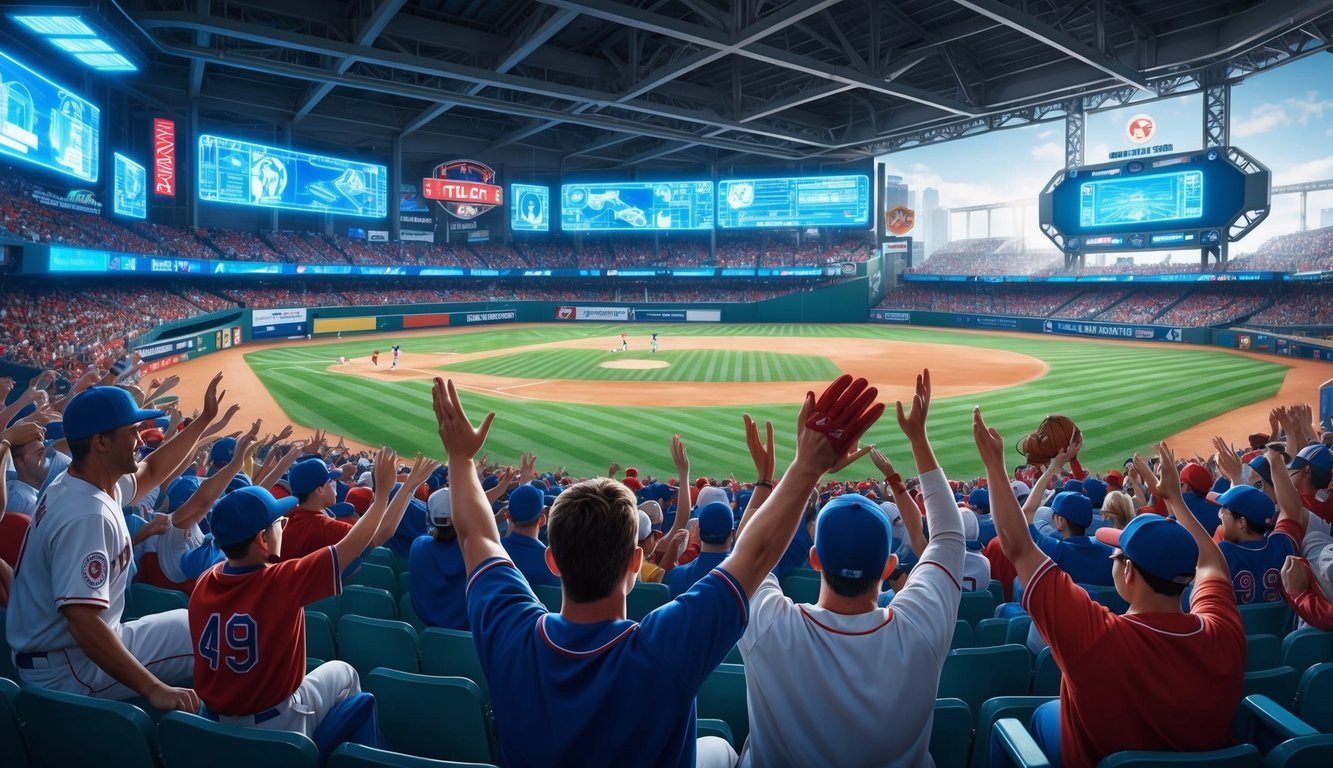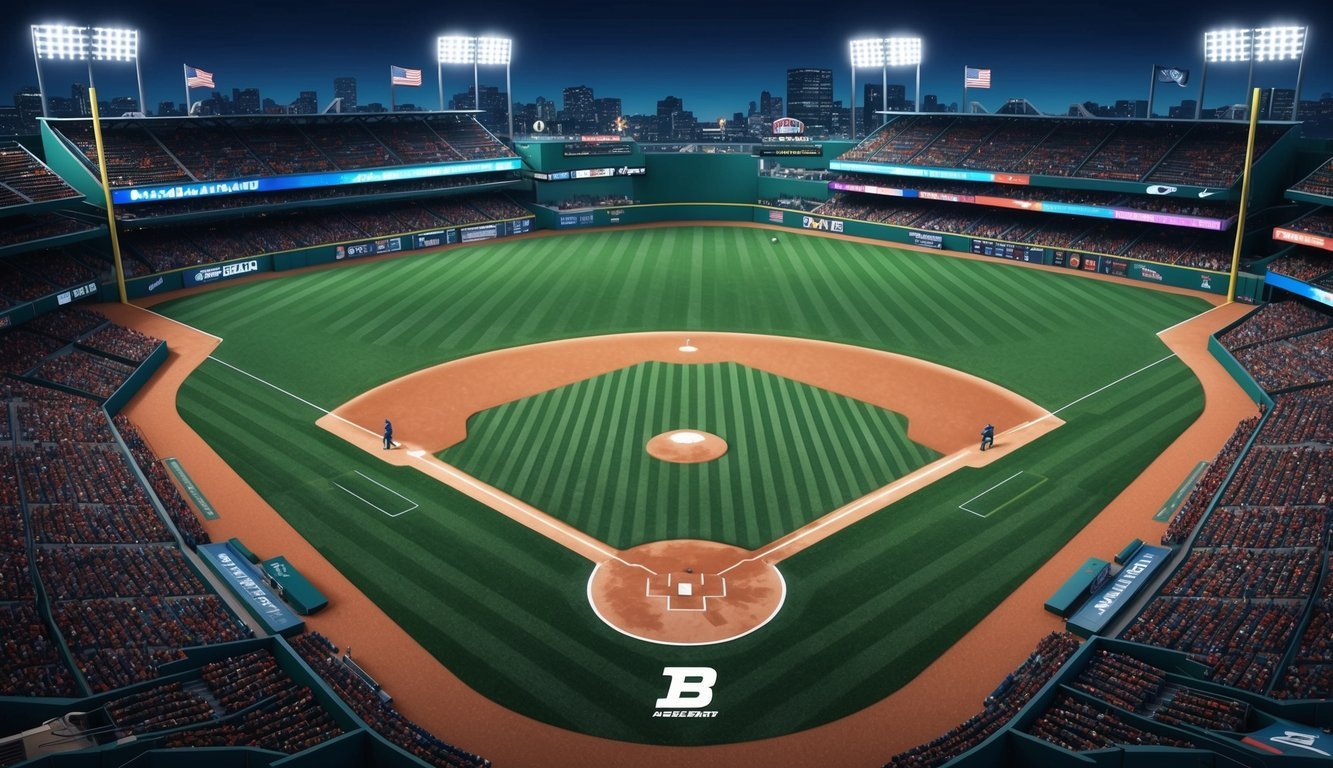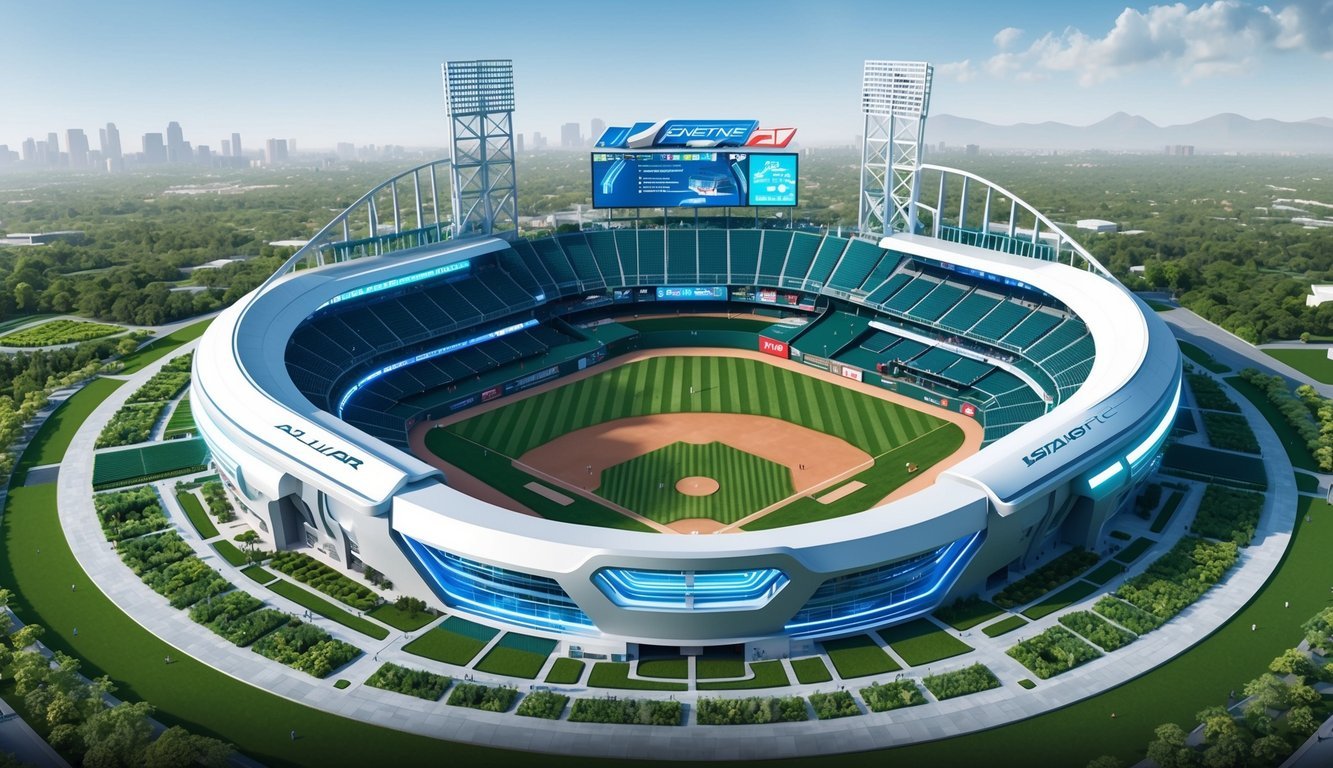Baseball has been America’s pastime for over a century, but the sport faces new challenges in the modern era.
Engaging younger audiences and adapting to technological advancements are key priorities for Major League Baseball as it looks to the future.
The integration of artificial intelligence and data analytics is reshaping how the game is played and analyzed.
Technology is becoming an integral part of baseball at all levels.
This shift opens up exciting possibilities for fan engagement, with enhanced stats, personalized experiences, and interactive elements that bring viewers closer to the action.
As baseball evolves, league expansion and rule changes may be on the horizon.
New markets could see the addition of MLB teams, while tweaks to gameplay might aim to increase excitement and pace.
The future of baseball promises a blend of time-honored traditions and cutting-edge innovations, ensuring the sport remains relevant and thrilling in an ever-changing world.
Exploring the Evolution of Baseball
Baseball has undergone significant changes since its inception.
From its humble beginnings to the modern game, the sport has adapted and grown while maintaining its core traditions.
History and Tradition
Baseball’s roots trace back to the mid-19th century.
Alexander Cartwright formalized the rules in 1845, laying the foundation for the game we know today.
The first professional team, the Cincinnati Red Stockings, formed in 1869.
The sport quickly gained popularity across America.
Major League Baseball (MLB) emerged in 1903, unifying the National and American Leagues.
Legendary players like Babe Ruth and Jackie Robinson shaped the game’s history.
Over the decades, the cultural impact of baseball extended beyond the field, influencing music, film, and literature.
Ballparks became gathering places where generations of fans bonded over their love for the game.
Today, baseball remains a symbol of American tradition, celebrated by millions worldwide.
Baseball’s traditions remain strong.
The seventh-inning stretch, ballpark foods, and the crack of the bat continue to charm fans.
Despite changes, the sport honors its past through throwback uniforms and old-timers’ games.
Technological Advancements
Technology has revolutionized baseball in recent years.
High-speed cameras and advanced analytics provide detailed insights into player performance.
Teams use this data to refine strategies and improve player development.
Pitch-tracking systems like PITCHf/x have transformed how pitches are analyzed.
Statcast technology measures every aspect of the game, from exit velocity to defensive efficiency.
Equipment has evolved too.
Composite bats, high-tech gloves, and protective gear enhance player safety and performance.
Video replay assists umpires in making accurate calls, ensuring fair play.
These innovations have changed how fans experience the game.
Mobile apps offer real-time stats and highlights, while virtual reality provides immersive experiences for viewers at home.
The Business of Baseball
Major League Baseball operates as a multi-billion dollar industry.
The financial landscape, revenue streams, and expansion into new markets shape the economic future of America’s pastime.
Financial Landscape
MLB teams have seen their valuations soar in recent years.
The New York Yankees lead the pack, worth an estimated $6 billion.
Other franchises like the Los Angeles Dodgers and Boston Red Sox also command valuations in the billions.
Player salaries continue to climb, with top stars earning over $30 million annually.
The competitive balance tax (luxury tax) aims to level the financial playing field between large and small market teams.
TV deals remain a crucial source of income.
Regional sports networks pay hefty sums for local broadcast rights, while national contracts with networks like ESPN and Fox bring in billions league-wide.
Revenue Streams
Ticket sales and concessions form the backbone of game-day revenue.
Premium seating options and luxury suites command top dollar at ballparks across the country.
Merchandise sales, from jerseys to caps, generate significant income.
MLB’s licensing agreements extend to video games, collectibles, and other product categories.
Digital platforms offer new monetization opportunities.
MLB.tv allows fans to stream out-of-market games, while the MLB app provides additional content and engagement options.
Sponsorships play a growing role in baseball’s bottom line.
From stadium naming rights to official league partnerships, brands pay big money to associate with MLB.
Expansion and New Markets
MLB has set its sights on international growth.
Regular-season games in London, Mexico, and Japan help cultivate new fanbases and open doors for future expansion.
Potential new franchises in cities like Montreal, Nashville, or Portland could reshape the league’s geographic footprint.
Expansion fees would bring a windfall to existing team owners.
Youth initiatives aim to cultivate the next generation of baseball fans and players.
Programs like MLB Play Ball work to increase participation and interest at the grassroots level.
Embracing new technologies, like virtual reality and augmented reality experiences, could help MLB attract younger audiences and create innovative revenue streams in the coming years.
Game Day Experience

The modern baseball game day experience combines traditional elements with cutting-edge technology to create an immersive and engaging atmosphere for fans.
Stadiums are evolving to offer more than just a view of the field, incorporating interactive features and amenities that cater to diverse audiences.
Fan Engagement and Fandom
MLB teams are leveraging technology to enhance fan engagement.
Mobile apps now allow spectators to order food, upgrade seats, and access real-time statistics without leaving their seats.
Some stadiums have introduced augmented reality (AR) features, enabling fans to point their phones at players and see instant stats and career highlights.
Social media integration has become a crucial part of the game day experience.
Fans can participate in live polls, share their photos, and even appear on the stadium’s big screen through hashtag campaigns.
Fantasy baseball elements are being incorporated into the live experience, with dedicated areas in stadiums for fantasy players to track their teams and make last-minute roster changes.
The Live Game Atmosphere
Stadiums are focusing on creating a festive atmosphere beyond the game itself.
Many venues now feature expansive concourses with local food vendors, craft breweries, and interactive zones for fans of all ages.
Pre-game and between-inning entertainment has evolved, with mascot races, trivia contests, and fan-participation games becoming staples of the ballpark experience.
Some stadiums have introduced themed seating areas, such as party decks or family zones, catering to different fan preferences and creating unique vantage points to watch the game.
High-definition video boards and immersive sound systems bring the action closer to fans, ensuring that no one misses a moment of the excitement, regardless of their seat location.
Rules, Regulations, and Changes

Baseball continues to evolve with new rules aimed at improving gameplay and player welfare.
These changes impact how the game is played and experienced by fans.
The Shift in Game Rules
MLB introduced several rule modifications for the 2024 season.
The pitch clock, implemented to speed up games, was shortened from 20 to 18 seconds with runners on base.
This adjustment aims to maintain the pace of play throughout the season.
A wider runner’s lane to first base was established.
This change gives batters more room to run without risking interference calls.
The league also banned extreme defensive shifts.
This rule requires two infielders on each side of second base when a pitch is thrown.
It’s designed to increase batting averages and create more action on the field.
MLB continues to test these rules in the minor leagues before implementing them at the top level.
The goal is to make baseball more exciting and accessible to fans while preserving its core elements.
Player Safety and Well-being
Recent rule changes have focused on protecting players from injuries.
Collision rules at home plate were implemented to reduce the risk of concussions and other serious injuries to catchers.
MLB has also adjusted regulations around sliding into bases.
These changes aim to prevent dangerous takeout slides that could harm fielders.
Pitcher workload management has become a priority.
Teams now closely monitor pitch counts and innings to protect their pitchers’ arms from overuse.
The league has implemented stricter protocols for dealing with concussions.
Players must pass a series of tests before returning to play after a head injury.
Looking Ahead: The Future Landscape of Baseball

Baseball’s evolution will be shaped by technological advancements, player development, and changing fan preferences.
These factors will intertwine to create a dynamic and engaging sport for future generations.
Rising Technologies and Analytics
Wearable technology will revolutionize player performance tracking.
Smart uniforms and equipment will provide real-time data on player vitals, biomechanics, and fatigue levels.
This information will help coaches make informed decisions about player rotations and injury prevention.
Advanced analytics will become more accessible to fans.
Augmented reality displays in stadiums will offer instant player stats and probabilities.
Mobile apps will allow spectators to access detailed performance metrics and predictive models during games.
Artificial intelligence will play a significant role in scouting and player development.
Machine learning algorithms will analyze vast amounts of data to identify promising talent and optimize training regimens.
The Player’s Journey
The path to professional baseball will change dramatically.
Virtual reality training systems will allow young players to face simulated Major League pitchers, enhancing their skills from an early age.
Personalized nutrition and recovery plans, tailored using genetic analysis, will become standard.
This approach will help players maintain peak performance throughout longer seasons.
International player development will expand, with MLB teams establishing more academies in emerging baseball markets.
This global focus will lead to a more diverse player pool and new playing styles.
Shifting Fan Expectations
Interactive experiences will become central to fan engagement.
Virtual reality platforms will offer immersive “in-stadium” experiences for remote viewers.
These experiences will come complete with customizable camera angles and commentary options.
Social media integration will reach new heights.
Fans will participate in real-time polls that influence in-game decisions.
This will create a more interactive viewing experience.
Digital collectibles, such as NFTs of historic moments, will replace traditional memorabilia.
These unique tokens will allow fans to own a piece of baseball history in the digital realm.
Shorter game formats may emerge to cater to changing attention spans.
Seven-inning games or timed innings could become more common, especially in regular-season play.
